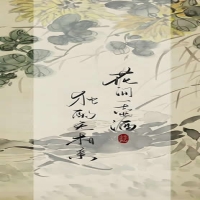形容春天的诗句,自古以来便是文人墨客笔下的永恒主题。从“春风又绿江南岸”的生机勃发,到“千里莺啼绿映红”的绚烂多彩,这些诗句不仅描绘了自然景色的变迁,更承载着人们对生命与希望的深切感悟。春天,作为四季之始,象征着新生与复苏,其诗意表达跨越千年,依然熠熠生辉。
在中国古典诗词中,形容春天的诗句 often 以细腻的笔触捕捉季节的细微变化。唐代诗人杜甫的《春夜喜雨》中,“好雨知时节,当春乃发生”一句,以春雨为媒介,抒发了对自然恩泽的感激之情,暗示了春回大地、万物生长的喜悦。这种诗句不仅描绘了春天的湿润与温暖,还融入了人文情感,使读者仿佛置身于细雨绵绵的夜晚,感受着生命的萌动。类似地,白居易的《赋得古原草送别》中,“野火烧不尽,春风吹又生”,以草的顽强生命力比喻春天的不可阻挡,强调了复苏与 resilience 的主题。这些诗句通过具体的意象,如雨、草、风,将抽象的春意具象化,让读者在阅读中体验到视觉、听觉甚至触觉的多重感受。
形容春天的诗句不仅限于自然景观,还常常融入社会与人生的哲理。宋代诗人苏轼的《惠崇春江晚景》中,“竹外桃花三两枝,春江水暖鸭先知”,以鸭子的直觉感知春水的温度,隐喻了人们对新事物的敏锐洞察。这首诗不仅赞美了春天的美好,还启发读者思考生活中的先见之明。同样,王安石的《泊船瓜洲》中,“春风又绿江南岸,明月何时照我还”,通过春风的绿意抒发了游子的思乡之情,将季节变迁与个人情感交织,展现了春天的双重性——既是外在的繁荣,也是内在的慰藉。这种融合使得形容春天的诗句超越了单纯的写景,成为表达人性与哲思的载体。

从文学史的角度看,形容春天的诗句 evolved over dynasties, reflecting cultural shifts. In the Tang Dynasty, poets like Li Bai and Du Fu emphasized grandeur and emotion, as seen in Li's "将进酒" where spring feasts symbolize joy and abundance. By the Song Dynasty, poets such as Su Shi and Li Qingzhao focused on subtler, introspective themes, using spring imagery to explore melancholy or nostalgia. For instance, Li Qingzhao's "如梦令" describes spring flowers fading, mirroring the fleeting nature of happiness. This evolution shows how形容春天的诗句 adapted to societal values, from Tang's optimism to Song's refinement.
在现代语境中,形容春天的诗句 continues to inspire. It serves as a bridge between traditional culture and contemporary life, reminding us of nature's cycles and the importance of hope. Educational systems often use these poems to teach language and values, while environmental movements draw on their imagery to advocate for sustainability. By appreciating these verses, we not only connect with the past but also find relevance in today's challenges, such as climate change or personal growth.
形容春天的诗句 is a rich tapestry of art and wisdom, offering timeless insights into beauty, resilience, and the human spirit. Through centuries, it has captivated hearts and minds, proving that the essence of spring—renewal and joy—is universal and eternal.




 相关阅读
相关阅读










